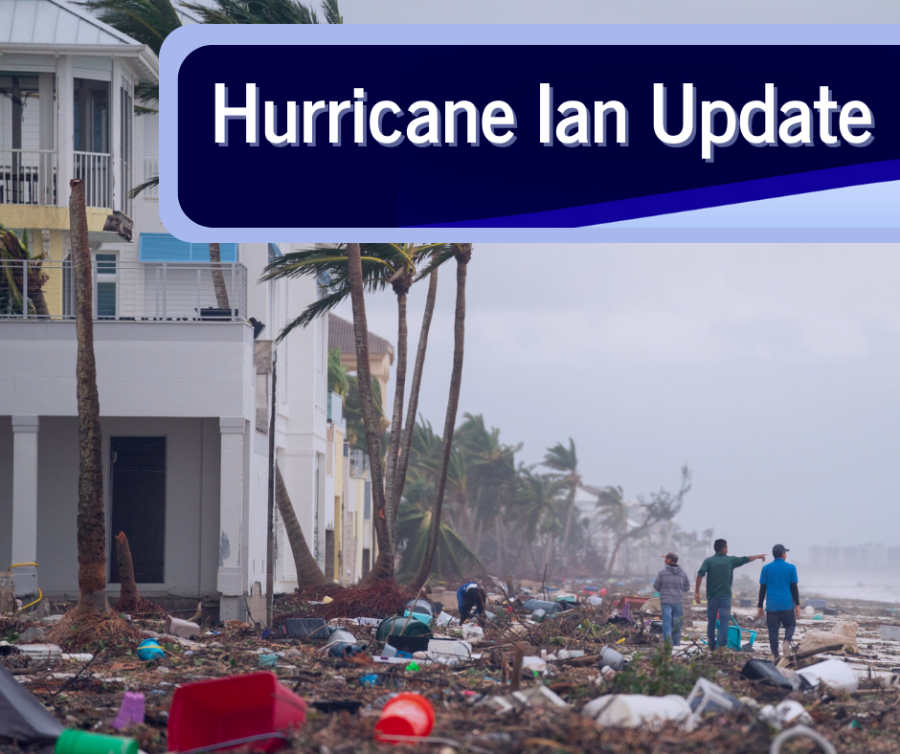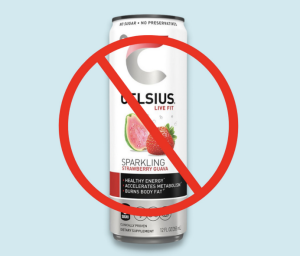Hurricane’s Ian’s impact on GC
October 20, 2022
Hurricane Ian made landfall in Florida around 3 p.m on Wednesday, Sept.28, carrying high winds across Cayo Costa, Fort Myers and Cape Coral. Hurricane Ian left a wake of destruction in Florida, including mass flooding and power outages as sea levels rose, leaving thousands of people to brace for the storm. Many in our GC community have family members in Florida that were in the storm’s path.
“My 92-year-old grandmother lives in a skilled nursing facility in Tampa,” said Dan Johnston, a GC grad student. “Her 88-year-old sister lives in a different assisted living facility in Tampa. Since both of their facilities are in mandatory evacuation zones, only six feet above sea level right on the waterfront, they were both evacuated to higher ground about 10 miles inland. Expecting a direct hit with storm surges of 10-12 feet, they were evacuated two days before Hurricane Ian actually made landfall in Fort Myers, about 100 miles south of Tampa.”
Thousands of people had to evacuate, most leaving behind their belongings, houses, and lives.
“My dad, stepmom, and 97-year-old grandmother were all under mandatory evacuation from our home,” said Christina Riecke, junior biology major. “At first, they only traveled a little inland to a hotel near the Fort Myers airport. However, as the storm severity was so awful, the hotel lost power and water so everyone was evacuated. My aunt and uncle live in Tampa, and because they got power back sooner than Cape Coral, my parents and grandma then stayed with them.”
Taylor Wirtz, reporter for Wink News, reported about the storm from her hotel room. She got stuck in her room once the storm hit and surges flooded the surrounding area.
“Taylor was put in a hotel in Naples, which was not expected to be as impacted by the storm as her home in Fort Myers,” said senior political science and criminal justice major, Grace Singletary. “However, Ian made landfall as a larger and stronger storm than expected. The first floor of the hotel flooded, carrying away their company cars. Taylor was stuck in the hotel for almost two days, I believe. She used social media to share updates with viewers and continues to do so, as the community is far from back to normal, even more than two weeks later.”
Hurricane Ian caused mass destruction to the lives of people in Cayo Costa, Fort Myers, and Cape Coral, leaving many homes, businesses, and streets in shambles after the intense storm, which was considered one of the most destructive hurricanes in decades. Hurricane Ian left families and communities traumatized by the events that took place in its path. Luckily, many of these families living in affected areas evacuated in time to brace for the storm, but many families weren’t able to.
“Even though my family was lucky to avoid the full wrath of Hurricane Ian, my elderly grandmother and great-aunt were still traumatized by the experience,” Johnston said. “Both of their nursing facilities lost power for two days, requiring them to stay in their temporary evacuation facilities for four days. They were both very uncomfortable in these facilities, squeezing three patients into a hotel room along with their oxygen machines and other medical equipment. My grandmother was confused about where she was, and she, along with a friend, made a panicked call to my aunt, saying that she had been kidnapped and needed to be rescued. When she returned to her nursing facility, the confusion continued because the facility was still on generator power, and her room had no light or air conditioning for the first day home.”
This is the start of a new normal for hurricane season to come as hurricane season is still on the rise, showing high levels on the Atlantic, which many are saying that climate change may be the cause. Due to the rising temperatures and sea levels, hurricanes are seen to be impacted by these changes, with estimates of more severe weather to come for future hurricane seasons.







